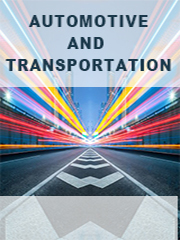TOP CATEGORY: Chemicals & Materials | Life Sciences | Banking & Finance | ICT Media

Download Report PDF Instantly
Report overview
The global LED Lighting for Automotive market was valued at US$ 9122 million in 2022 and is projected to reach US$ 11640 million by 2029, at a CAGR of 3.5% during the forecast period. The influence of COVID-19 and the Russia-Ukraine War were considered while estimating market sizes.
The automotive lighting system of a motor vehicle consists of lighting and signaling devices mounted or integrated to the front, rear, sides, and in some cases the top of a motor vehicle. This lights the roadway for the driver and increases the conspicuity of the vehicle, allowing other drivers and pedestrians to see a vehicle's presence, position, size, direction of travel, and the driver's intentions regarding direction and speed of travel. Emergency vehicles usually carry distinctive lighting equipment to warn drivers and indicate priority of movement in traffic.
A light-emitting diode (LED) is a two-lead semiconductor light source. It is a p?n junction diode, which emits light when activated. When a suitable voltage is applied to the leads, electrons are able to recombine with electron holes within the device, releasing energy in the form of photons. This effect is called electroluminescence, and the color of the light (corresponding to the energy of the photon) is determined by the energy band gap of the semiconductor. Because of their long life, fast switching times, and their ability to be seen in broad daylight due to their high output and focus, LEDs have been used in brake lights for cars' high-mounted brake lights, and in turn signals for some time, but many vehicles now use LEDs for their rear light clusters. The use in brakes improves safety, due to a great reduction in the time needed to light fully, or faster rise time, up to 0.7 second faster than an incandescent bulb. This gives drivers behind more time to react. In a dual intensity circuit (rear markers and brakes) if the LEDs are not pulsed at a fast enough frequency, they can create a phantom array, where ghost images of the LED will appear if the eyes quickly scan across the array. White LED headlamps are starting to be used. Using LEDs has styling advantages because LEDs can form much thinner lights than incandescent lamps with parabolic reflectors.
In a word, Automotive LED lighting is the automotive lighting using LED.
This report aims to provide a comprehensive presentation of the global market for LED Lighting for Automotive, with both quantitative and qualitative analysis, to help readers develop business/growth strategies, assess the market competitive situation, analyze their position in the current marketplace, and make informed business decisions regarding LED Lighting for Automotive. This report contains market size and forecasts of LED Lighting for Automotive in global, including the following market information:
Europe is the largest Automotive LED Lighting market with about 46% market share. Japan is follower, accounting for about 19% market share.
The key players are Koito, Magneti Marelli, Valeo, Hella, Stanley, OSRAM, ZKW Group, Varroc, Car Lighting District, GUANGZHOU LEDO ELECTRONIC, CN360, Easelook, TUFF PLUS, Dahao Automotive, Bymea Lighting, Sammoon Lighting, FSL Autotech, Hoja Lighting etc. Top 3 companies occupied about 52% market share.
We surveyed the LED Lighting for Automotive manufacturers, suppliers, distributors and industry experts on this industry, involving the sales, revenue, demand, price change, product type, recent development and plan, industry trends, drivers, challenges, obstacles, and potential risks.
Total Market by Segment:
Global LED Lighting for Automotive Market, by Type, 2018-2023, 2024-2030 ($ Millions) & (K Units)
Global LED Lighting for Automotive Market Segment Percentages, by Type, 2022 (%)
Global LED Lighting for Automotive Market, by Application, 2018-2023, 2024-2030 ($ Millions) & (K Units)
Global LED Lighting for Automotive Market Segment Percentages, by Application, 2022 (%)
Global LED Lighting for Automotive Market, By Region and Country, 2018-2023, 2024-2030 ($ Millions) & (K Units)
Global LED Lighting for Automotive Market Segment Percentages, By Region and Country, 2022 (%)
The report also provides analysis of leading market participants including:
Outline of Major Chapters:
Chapter 1: Introduces the definition of LED Lighting for Automotive, market overview.
Chapter 2: Global LED Lighting for Automotive market size in revenue and volume.
Chapter 3: Detailed analysis of LED Lighting for Automotive manufacturers competitive landscape, price, sales and revenue market share, latest development plan, merger, and acquisition information, etc.
Chapter 4: Provides the analysis of various market segments by type, covering the market size and development potential of each market segment, to help readers find the blue ocean market in different market segments.
Chapter 5: Provides the analysis of various market segments by application, covering the market size and development potential of each market segment, to help readers find the blue ocean market in different downstream markets.
Chapter 6: Sales of LED Lighting for Automotive in regional level and country level. It provides a quantitative analysis of the market size and development potential of each region and its main countries and introduces the market development, future development prospects, market space of each country in the world.
Chapter 7: Provides profiles of key players, introducing the basic situation of the main companies in the market in detail, including product sales, revenue, price, gross margin, product introduction, recent development, etc.
Chapter 8: Global LED Lighting for Automotive capacity by region & country.
Chapter 9: Introduces the market dynamics, latest developments of the market, the driving factors and restrictive factors of the market, the challenges and risks faced by manufacturers in the industry, and the analysis of relevant policies in the industry.
Chapter 10: Analysis of industrial chain, including the upstream and downstream of the industry.
Chapter 11: The main points and conclusions of the report.